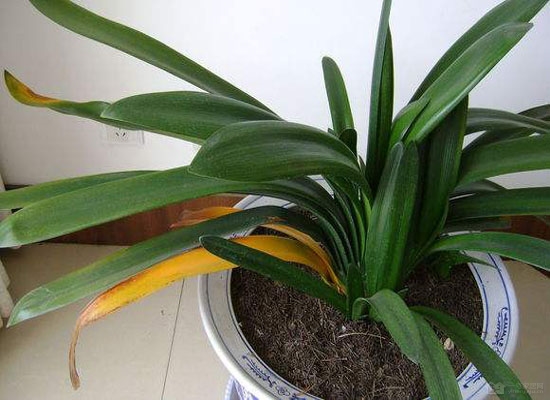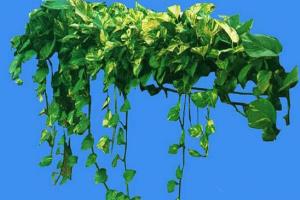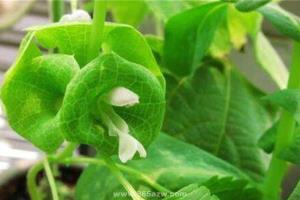Why do the leaves of Cymbidium turn yellow? what about the yellowing of Cymbidium?
With its elegant form, the gentleman orchid has become a regular guest in the writings of the literati, and it has also become one of the first choices of green plants in the home. However, in the process of planting magnolia, the leaves often turn yellow, which not only hinders the viewing, but also destroys the elegance. So, what if the magnolia turns yellow?

There are several situations in which the leaves of Cymbidium are yellow. if the bottom leaves grow new roots from the axils of the leaves, it is a normal metabolism to make the leaves yellow. One situation is that the leaves turn yellow without new roots in the axils of the leaves, mostly due to the soil quality, poor air permeability, too much fertilizer or poor control of watering dry humidity, which may make the leaves of Cymbidium yellow.
1. The leaves of Cymbidium are yellow, and the middle leaves are black and rotten.
If the middle small leaves are black and rotten, we need to make a further judgment, break apart the two leaves and look at them. If the gap between the leaves is blackened and festering juice flows out. It can be judged that the formed gentleman orchid arrow did not have time to grow out of the leaves and rot directly in the middle of the leaves.
There are many reasons for flower and arrow rot: one is that too much water is sprayed, which leads to sewage flowing into the crevice, which leads to bacterial infection, and the other is that careless watering leads to sewage splashing into the crevice and causing rot.
Consequences: under normal circumstances will not affect the life of the orchid, but if in high temperature and humidity weather, it is very easy to cause wiping head and the whole plant rot.
Treatment: toilet paper or facial Jack paper can be used to absorb rotten juice, use appropriate methods to remove dirt that can be cleaned, and usually keep the environment relatively dry, it is recommended to use basin watering method.
2. All the leaves of Cymbidium turn yellow.
All yellowing is often a symptom of sunburn.
Solution: shade immediately and cut off the yellow leaves.
3. The leaves of Cymbidium are withered and sagging.
The withered or drooping leaves are a symptom of lack of water.
Solution: watering should grasp the principle of no dry, no watering, no stagnant water in the basin.
4. The leaves of Cymbidium are partially yellowed.
Local yellowing is likely to be roasted by fire, blown by cold wind, scalded by water and eroded by acid. Sometimes, the lack of nitrogen fertilizer will cause plants to suffer from chlorosis, reducing chlorophyll and causing the leaves to turn yellow.
Solution: the former can eliminate external causes in time. The latter can increase the fermented cake fertilizer and water. (the methods of breeding vary with different seasons)
5. The leaves of Cymbidium are wrinkled and yellow spots.
Excessive fertilization causes root burning.
Solution: change the soil immediately, soak the roots with 0.1% potassium permanganate aqueous solution for 20-30 minutes, rinse with clean water, remove the rotten roots after drying, spread plant ash on the wound, and replant.
6. Two outer leaves of Cymbidium turn yellow (planted for 4 years)
This is the normal new layer metabolism.
Solution: just trim off the outer 2 leaves.
7. The leaves of Magnolia appear grayish yellow
The grayish yellow leaves of Cymbidium are mainly caused by the strong direct sunlight.
Solution: need to shade the magnolia.
8. The leaves of Cymbidium appear yellowing symptoms.
Due to lack of light, if the room is very dark, the gentleman orchid will yellowing.
Solution: replenish the light with fluorescent lamps.
9. The leaves of Magnolia are yellow and weak
The yellow and weak leaves are lack of fertilizer.
Solution: thin fertilizer should be applied frequently; the yellowing of leaves is native and impermeable. Rotten leaf soil or pine needle soil should be replaced.
10. Rotting roots caused by yellowing of low leaves
Solution:
① uprooted the magnolia by the roots.
② cut off the old and rotten leaves with a beauty knife.
③ cut off the rotten roots and old roots with scissors.
④ mixed the spray bottle with 3:5 water and chlorothalonil.
⑤ moved the orchid back into the basin.
⑥ was watered with rooting liquid and nutritious water of Happy Forest.
⑦ was watered about twice a month for 5 months.
After 5 months of ⑧, water was irrigated about 4 times a month for 2 months.
⑨ returned to normal watering times.
It turns out that there are many reasons for the yellowing of the leaves of Cymbidium, and the key is to find out the cause. As non-professionals, exclusion may be the easiest way to identify the cause.
- Prev

What kind of plant is green orchid? what are the requirements for the culture of green orchid?
What kind of plant is green orchid? what are the requirements for the culture of green orchid?
- Next

What are the culture methods of potted shell flowers?
What are the culture methods of potted shell flowers?
Related
- Wuhan Hospital Iron Tree Blooming Result Was Instantly Frightened by the Gardener Master
- Which variety of camellia is the most fragrant and best? Which one do you like best?
- What is the small blue coat, the breeding methods and matters needing attention of the succulent plant
- Dormancy time and maintenance management of succulent plants during dormancy
- Minas succulent how to raise, Minas succulent plant pictures
- What are the varieties of winter succulent plants
- How to raise succulent plants in twelve rolls? let's take a look at some experience of breeding twelve rolls.
- Attention should be paid to water control for succulent plants during dormant period (winter and summer)
- Watering experience of twelve rolls of succulent plants
- Techniques for fertilizing succulent plants. An article will let you know how to fertilize succulent plants.

